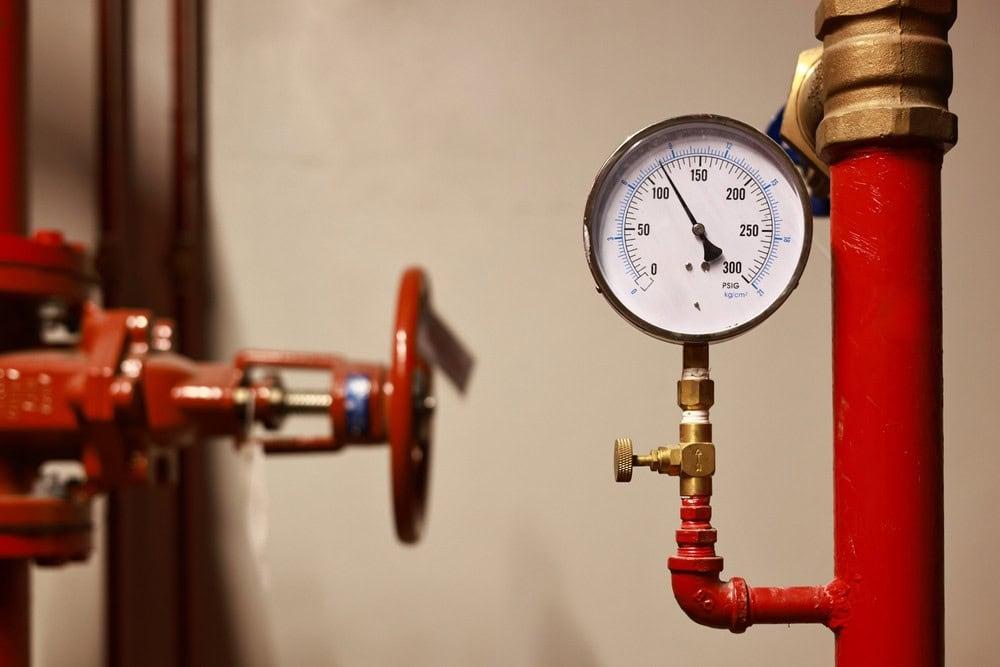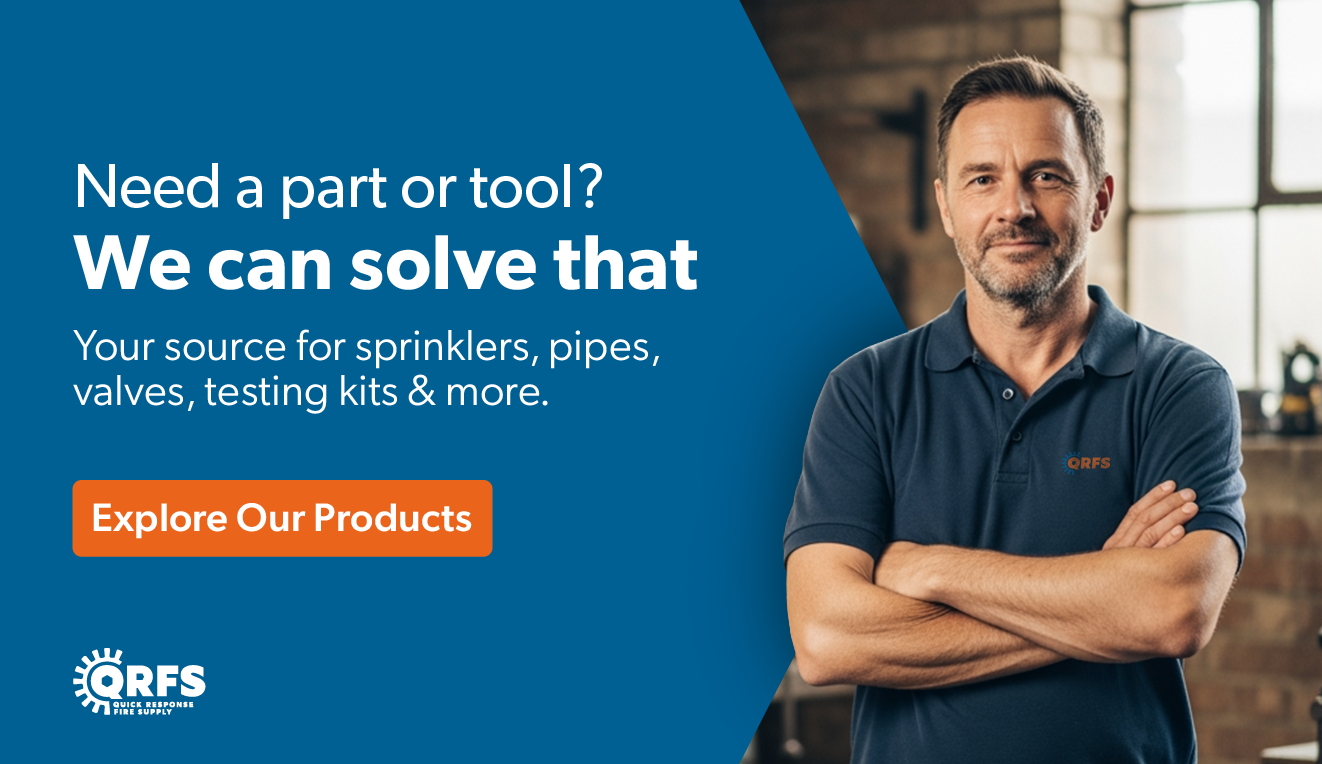Pressure spikes can damage these devices in fire protection systems and other applications—here’s why, and how to prevent pressure gauge overpressure
Pressure gauges are essential for monitoring the status of fire sprinkler systems, standpipes, and other systems, and they can be delicate instruments. Every gauge has a working range in which it can measure pressure accurately and without damage. If the number gets too high too quickly, gauge overpressure can break fragile internal parts.
Gauges should always be installed mindful of the normal operating pressure of a piping system. However, even if a device is rated appropriately, brief pressure spikes can occur, ruining gauges unless they have proper protection.
This article is your guide to:
- The pressure limitations of pressure gauges, including rated pressure, working pressure, proof pressure, and burst pressure
- Events that can cause damaging pressure spikes
- How to avoid pressure spikes and damage with best practices and pressure-limiting valves, aka snubbers
For your monitoring and testing needs, QRFS has digital and analog gauges and all the supplies needed to perform flow testing.
Rated pressure, working pressure, proof pressure, and burst pressure
All pressure gauges, analog or digital, rely on a physical mechanism. And these mechanisms naturally have physical limits.
- Bourdon-tube gauges are the most common analog type with a needle and a circular dial. They rely on the movement of a bourdon tube—a “flattened circular tube coiled into a circular arc”—that straightens under fluid pressure to turn the needle.
- Digital gauges use the movement of diaphragms/pressure transducers under pressure to control electrical output.
Regardless of the device, any pressure gauge pushed past the limits of its sensing parts can permanently break. There are four relevant numbers for minding the limits of gauges and avoiding damage: the rated pressure, working pressure, proof pressure, and burst pressure.
Rated pressure
A gauge’s rated pressure is the range of pressure it can accurately and safely measure. This range of values is front-and-center on any pressure gauge you purchase. Digital gauges will have an upper limit printed on their faces, while analog gauges have a top number on the dial.
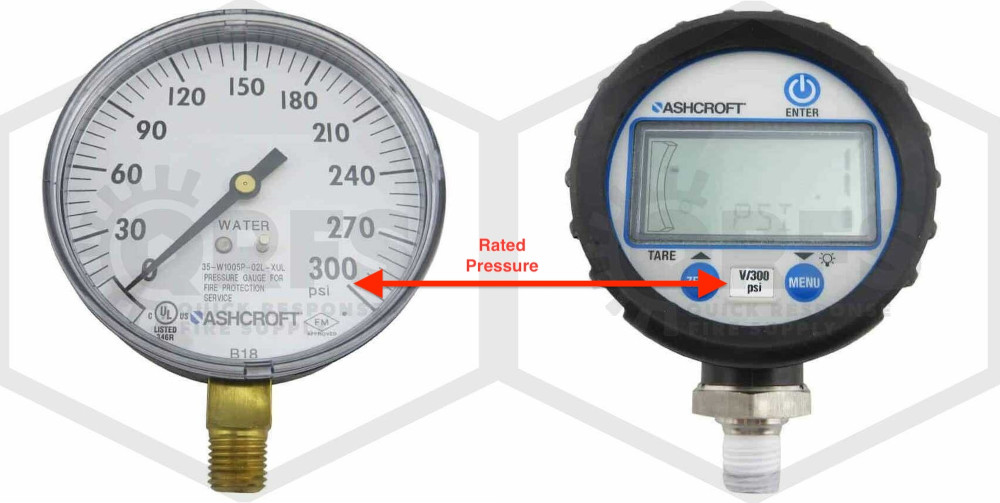
The essential step to prevent overpressure is to select a pressure gauge with a maximum rating significantly higher than your expected operating pressure with a margin of error, which we will explain next.
Realistic working pressure
Just because a gauge can measure 80 PSI, 300 PSI, or whatever upper limit doesn’t mean it should continually operate at or near that number. One reason, applying to analog gauges, is that their accuracy improves in the middle of their range. Another is that over time, higher pressures will wear down a gauge’s internal parts and reduce its lifespan, even if the device can technically handle those numbers.
Thus, gauge manufacturers sometimes publish specific working pressures on their data sheets. For example, Ashcroft lists the following working pressure specs on its 8008S gauges:
- “Steady: 75% full-scale value.” The gauge can handle steady, regular pressure up to 75%.
- “Fluctuating: 80% full-scale value.” Fluctuating pressures generally shouldn’t exceed 80%.
- “Short Time: full-scale value.” Don’t max out the gauge for long!
However, other gauge data sheets don’t have this information. And some experts suggest a simpler and more conservative working pressure benchmark.
New England Manufacturing, a QRFS partner and maker of quality flow-test equipment, advises that a gauge’s full-scale value should be roughly double the system’s typical, “steady” working pressure. For example, a system with 50 PSI of steady pressure should ideally be measured by a gauge with an upper range of 100 PSI.
Proof pressure and overpressure
Some pressure gauges list proof pressure on their data sheets; it’s the maximum pressure a gauge can experience without damaging the device and impacting its accuracy. Overpressure, often documented (and sometimes conflated) with proof pressure, is any pressure “beyond the full scale” of the gauge.
It’s not ideal for gauges to enter a state of overpressure at all, but they shouldn’t be permanently harmed if the conditions are brief and they don’t hit the proof pressure. Many moderately over-pressurized gauges will return to normal once the number reduces.
Proof pressure can be another story, and data sheets typically report this value as a percentage of the rated pressure range. For example, Ashcroft states that the proof pressure of its 8008S analog gauges with a ≤100 BAR range is 125% of the maximum scale value. So, in this scenario, a 250 PSI water gauge has a proof pressure of 312.5 PSI, whereas a 500 PSI gauge has a proof pressure of 625 PSI.
Some analog gauges, such as Ashcroft’s 1005P air gauge, have a range on their dial just past the max rated pressure labeled “retard.” The label indicates the range of overpressure in which the movement of the mechanism is physically slowed (“retarded”). This portion of the dial won’t have detailed tic marks—just an abrupt jump from the max-rated pressure to a much higher number. The end number is the proof pressure (and many gauges may say “overpressure” instead of “retard” to mark the prior range).
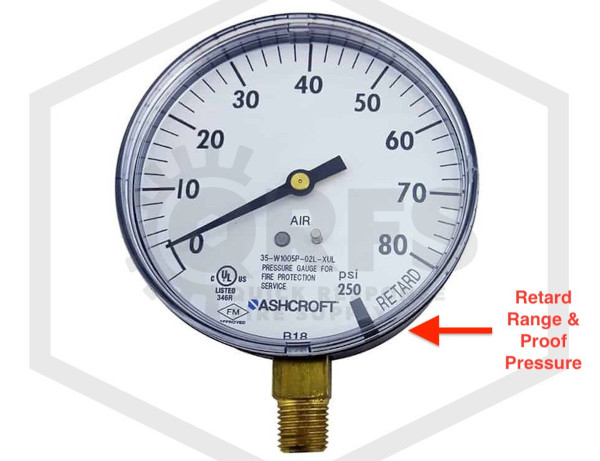
Regardless, practically speaking, the concepts of overpressure and proof pressure aren’t that relevant for many analog gauges since most don’t have a range that warns users the pressure is too high. Instead, the gauge just has an upper number on the dial, and the needle gets ‘buried‘ during overpressure. Simply put: the pressure shouldn’t hit or go beyond that upper number for long.
In contrast, you’ll be able to see when the pressure exceeds the maximum pressure listed on the face of a digital gauge and by how much—at least, until the gauge breaks and the numbers freeze or are replaced by an error message.
Burst pressure
Burst pressure, like proof pressure, is reported in some data sheets as a percentage of the rated pressure range. But while briefly nearing the proof pressure may be okay, exceeding the burst pressure will always cause the gauge to fail irreversibly.
Depending on the gauge’s design, exceeding burst pressure may only destroy the mechanism, or it might also cause a leak. Not all manufacturers provide burst pressure in their data sheets because there “are no industry standard tests to determine” it, and it’s a hard number to estimate for gauges that experience different conditions.
Pressure surges can cause significant overpressure and damage
Damaging overpressure rarely results from regular system operations. Again, the expected system pressure should fall squarely within the middle of the pressure range of a gauge.
Overpressure typically happens as a sudden, brief pressure spike. These spikes occur for two common reasons in fire protection systems: pressure surges when a valve is suddenly opened or a pump is turned on and ramped up, and water hammer when a valve is suddenly closed.
Pump and valve pressure surges
Opening a valve suddenly or firing up a pump and accelerating it can create a pressure spike much larger than the normal operating pressure that’s capable of damaging a gauge. In fire protection systems, the most common source is the fire pump, either during annual flow testing or a fire-flow activation.
Fire pumps produce the most pressure when no water flows (when no outlets are open to let water out). This is called churn pressure. Though churn pressure is the highest pressure a system should experience, it’s an expected pressure. All system components, including gauges, should be able to handle it.
However, pump activation can sometimes cause pressure surges far exceeding normal (anywhere between 4 times and 15 times operating pressure). A QRFS customer recently contacted us because two pressure gauges broke due to overpressure during a pump flow test. The last numbers the devices read were 1,381 and 1,559 PSI on gauges only rated for 300 PSI.
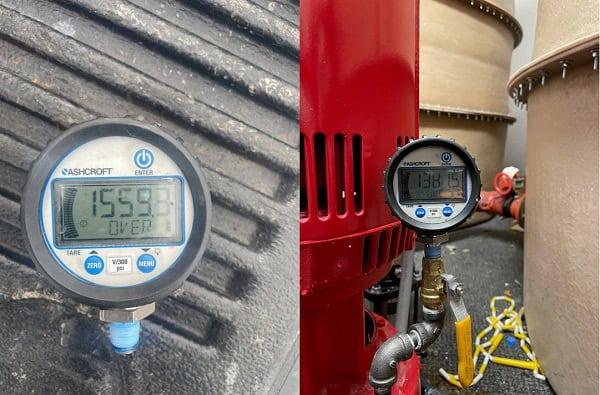
Water hammer
Water hammer is a force most commonly generated when flowing water suddenly stops. Because water is relatively noncompressible, quickly stopping its movement converts the fluid flow velocity to pressure—a lot of it. The usual way that water hammer happens is through the sudden closure of a valve.
National Fire Protection Association standards, such as NFPA 25: Standard for the Inspection, Testing, and Maintenance of Water-Based Fire Protection Systems, have rules for how quickly valves should be closed to avoid water hammer. And since some valve types can be shut almost instantly, they are generally not used as control valves. Instead, slower-closing butterfly valves or OS&Y valves, which require multiple turns of a valve wheel, are employed.
Take steps to avoid pressure surges, and use pressure gauge snubbers to prevent damage
Keeping fire protection gauges in working condition starts with following some best practices outlined in manufacturers’ instructions:
- “Surges are particularly damaging to pressure gauges if the pipe is originally empty. To avoid pressure surges, fluid lines should remain full (if possible).”
- “[P]umps should be brought up to power slowly”
- “[V]alves should be opened slowly”—again, that’s why fire protection control valves are typically butterfly valves or OS&Y valves, in addition to those being “indicating” valves that show open and closed status at a glance.
Another way to avoid gauge damage from pressure spikes is to use pressure limiting valves (PLV), aka pressure snubbers. These simple-to-install devices shield gauges, particularly digital models, from harm.
Think of a snubber like a surge protector for water. Where surge protectors normally allow electricity to flow but shut down excessive voltage to protect electronics, snubbers let water pass at normal operating pressures but partially or totally isolate gauges when pressure rises suddenly. There are three general types of pressure gauge snubbers:
- Porous disc snubbers let fluid flow through a semi-permeable wire mesh that reduces the magnitude of pressure spikes. These are the most affordable devices, but they can become clogged by debris and require backflushing.
- Piston snubbers use a piston that slides back and forth in its housing to protect pressure gauges. The piston is pushed against the opening of the valve orifice when pressure gets too high and the opens again when it recedes. These devices can often be tuned to the desired pressure.
- Adjustable-type snubbers are similar to piston snubbers but use a ball check valve rather than a piston. They also incorporate a choke valve to smooth out fluid flow. These are the most expensive types of snubbers.
Snubbers shouldn’t be confused with gauge valves, which are fittings that allow manually closing off fluid to a pressure gauge so you can remove it without draining the system.
Importantly, snubbers are more valuable for preventing damage from pressure spikes on digital gauges. That’s because digital models are more sensitive than analog versions and read pressure faster. Seemingly moderate overall spikes are actually large when fluid is pushed through a small space. For example, a sudden system pressure surge to 300 PSI after starting a fire pump might be about 1,500 PSI on a gauge when a slug of water is forced inside its small orifice and pressure transducer.
Digital gauges read this pressure almost instantly, whereas liquid-filled analog gauges have a delay. A snubber will slow the pressure and rate at which a gauge sees changes, protecting a digital gauge’s transducer by allowing it to react more like a liquid-filled analog gauge.
Nevertheless, snubbers can also protect analog gauges, and they’re also used in systems that may be subject to pressure surges.
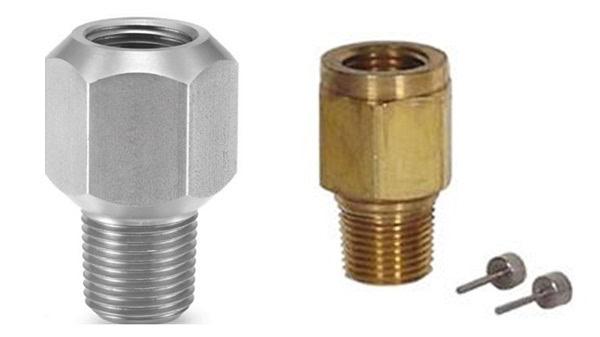
Avoid overpressure damage to pressure gauges!
Pressure gauges are essential for fire protection systems. You’ll find them in various locations, including on fire pumps, sprinkler risers, and the connections to floor cross mains. However, they can also be somewhat delicate and expensive. So, protect your pressure gauges from damaging pressure spikes!
Remember, every gauge has a rated pressure and range where it can safely and accurately take measurements. Avoid sudden valve closures or pump start-ups that cause brief but dramatic spikes. And consider installing snubbers (pressure limiting valves), specifically on digital models.
For your pressure monitoring needs, QRFS has both digital and analog pressure gauges, plus valves, nozzles, pitot gauges, and more for flow testing.
For special orders of gauges or other equipment, contact our support team at 888-361-6662 or support@qrfs.com.
This blog was originally posted at blog.qrfs.com. If this article helped you, check us out at Facebook.com/QuickResponseFireSupply or on Twitter @QuickResponseFS.


